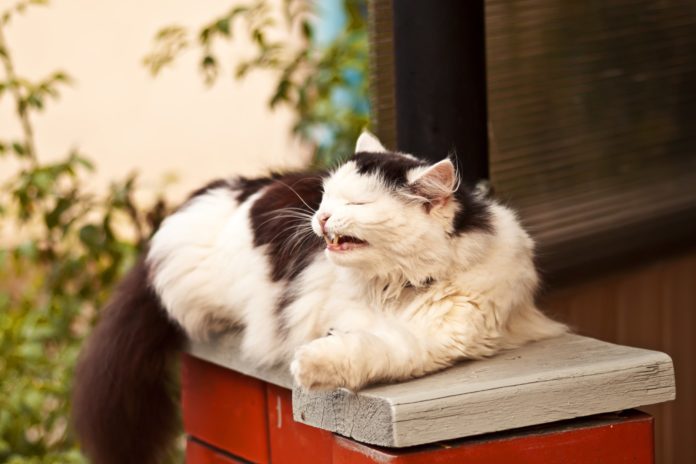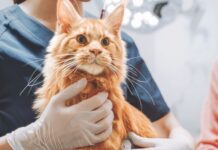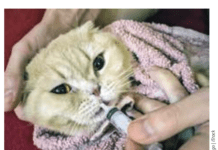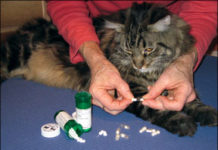Demonishen | Deposit Photos
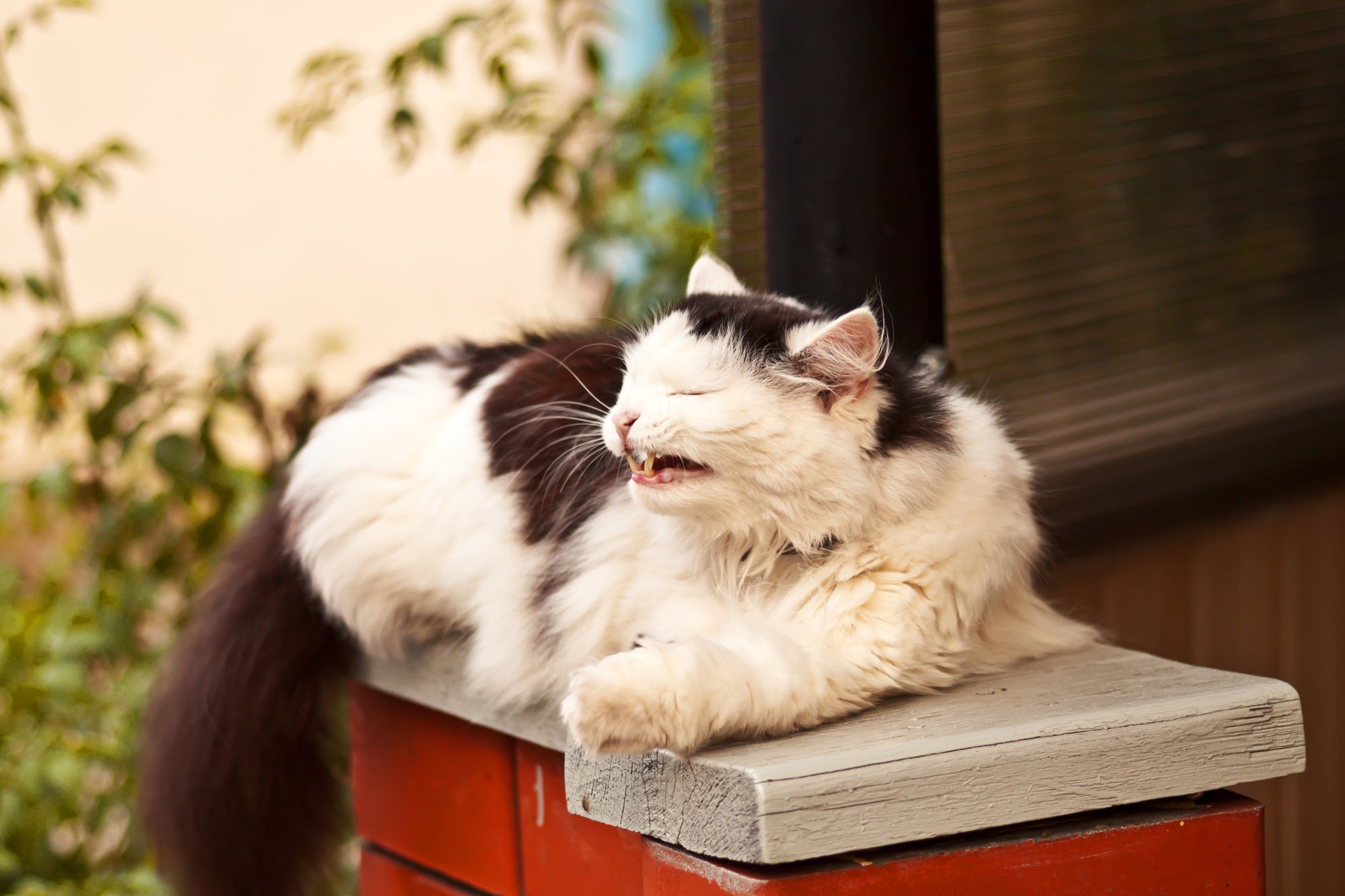

Despite the disturbing definition that will first appear if you do an internet search for “rhinotomy” (mutilation or amputation of the nose), this procedure can be beneficial to cats experiencing chronic nasal problems. There are two primary surgical techniques: dorsal rhinotomy and ventral rhinotomy. In both cases, the surgeon removes part of the bone surrounding the cat’s sinuses in order to gain access to the sinus and remove the source of the problem, be it a foreign body, a tumor, or infected tissues.
When Is It Necessary?
Surgery is rarely the first step in treating nasal issues. Upper respiratory infections are common in cats, particularly those housed in close quarters with many other cats (shelter, cattery, hoarding situation) or those living in stressful environments (shelter, outside). These infections affect the cat’s nose and/or throat, and can be caused by viruses, bacteria, fungi, and/or protozoa.
If your cat or kitten is exhibiting some or all of the symptoms of an infection (see sidebar), your veterinarian will usually start with medical treatment. In many cases he/she will start by prescribing a broad-spectrum antibiotic to address any bacterial infection that may be present, along with eye ointments if necessary. Cats with oral ulcers may need soft food to prevent eating from being painful.
Your veterinarian may send out swabs from your cat’s eyes, nose, and/or throat for a respiratory panel to identify the cause of the infection. This is particularly useful for stubborn infections that aren’t responding to the initial treatment, or for cats who are in poor health and need to be sure they are getting the most ideal treatment from the start.
But sometimes nasal issues either don’t respond to treatment or respond for a short time and then return in full force. These chronic problems usually suggest either a severe infection and/or that the infection is being caused or exacerbated by a tumor or foreign body in the nasal passages. Tumors and foreign objects can result in chronic irritation or blockage of normal fluids, creating spaces for microbial infections to set up shop.
Your veterinarian may recommend x-rays, a CT scan, or nasal endoscopy to see inside your cat’s nose. An endoscope is a flexible tube with a light and camera attached that can be inserted into a body cavity to perform a visual inspection.
A rhinoscope is an endoscope designed specifically for use in the nasal passages. Many of these scopes also have attachments that can take biopsies and other samples. It may be possible to remove a foreign body or tumor using an endoscope. This procedure does require general anesthesia, as few cats are willing to sit still while a tiny camera is inserted up their nose. If rhinoscopy is not available or unable to resolve your cat’s nasal problems, a rhinotomy may be the next step.
Dorsal vs. Ventral
For the dorsal approach, an incision is made in the front of the cat’s face. A piece of one or both nasal bones is then removed to allow access to the sinuses so that the surgeon can remove tumors, foreign bodies, or any infected tissues present. If the bone itself is healthy, it will then be fixed in place before the surgery is completed and will heal like a normal fracture.
A dorsal rhinotomy allows the surgeon full access to the sinuses, but has a high likelihood of altering the cat’s appearance (this is less severe if the bone is able to be replaced).
The ventral approach accesses the sinuses from underneath, going through the hard palate on the roof of the mouth. Pieces of bone will be removed to allow access to the sinuses and nasal cavity.
A ventral rhinotomy is considered less invasive and has a better cosmetic outcome, but there is some debate over whether or not it allows the surgeon full access to the frontal sinuses. A cat will need to eat soft food after this surgery to allow the incision to heal.
Complications
Bleeding is a common complication of the rhinotomy surgery due to the large number of blood vessels in the face. Thorough bloodwork must be done before the procedure to ensure that the cat is healthy enough to undergo the operation and to evaluate clotting abilities. Blood transfusions may be necessary during the surgery if there is excessive bleeding. After the procedure, the cat’s face, especially the nostrils, will need to be cleaned frequently to allow for proper breathing.
Nasal surgery can impact a cat’s sense of smell, which may cause the cat to be disinterested in food. Appetite stimulants such as mirtazapine can help, or the cat may need to be syringe fed or to have a feeding tube placed temporarily.
The most common long-term complication is chronic nasal discharge. Some studies found that as many as 75 percent of patients have persistent nasal discharge following the procedure. This discharge may be clear or mucoid. Some patients may also breathe more loudly than usual after the surgery. Both of these complications are most likely due to the altered anatomy of the nasal passages.
It is possible for the cat’s cranial vault (contains the brain) to be opened during the procedure, which can have severe consequences depending on the situation. This is why it is important to have an experienced surgeon and to do diagnostic imaging beforehand so that the surgeon knows exactly where the problem originates before going in.
Outcome
Cats are more likely to have good results post-rhinotomy if the cause of the nasal problems was a foreign body or infection. Malignant tumors have a poor prognosis, especially if the cancer has spread. However, if the tumor was affecting the cat’s breathing ability, the cat may gain relief from having the tumor debulked. Exact outcome will vary depending on the type of tumor, whether or not the surgeon was able to achieve clean margins, and the cat’s age and health.

